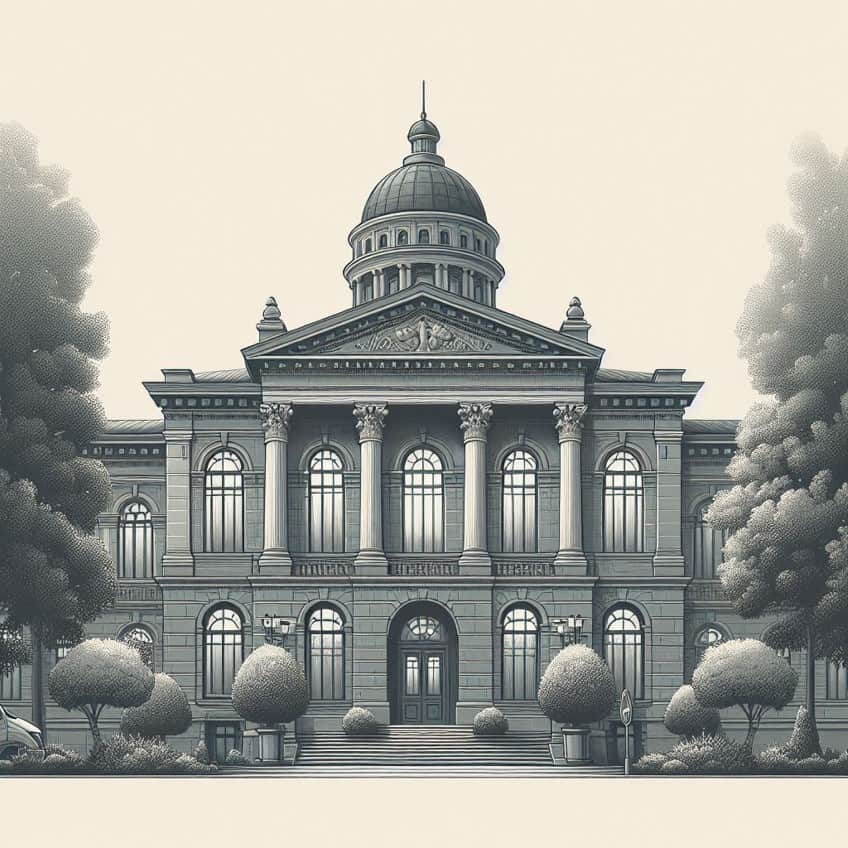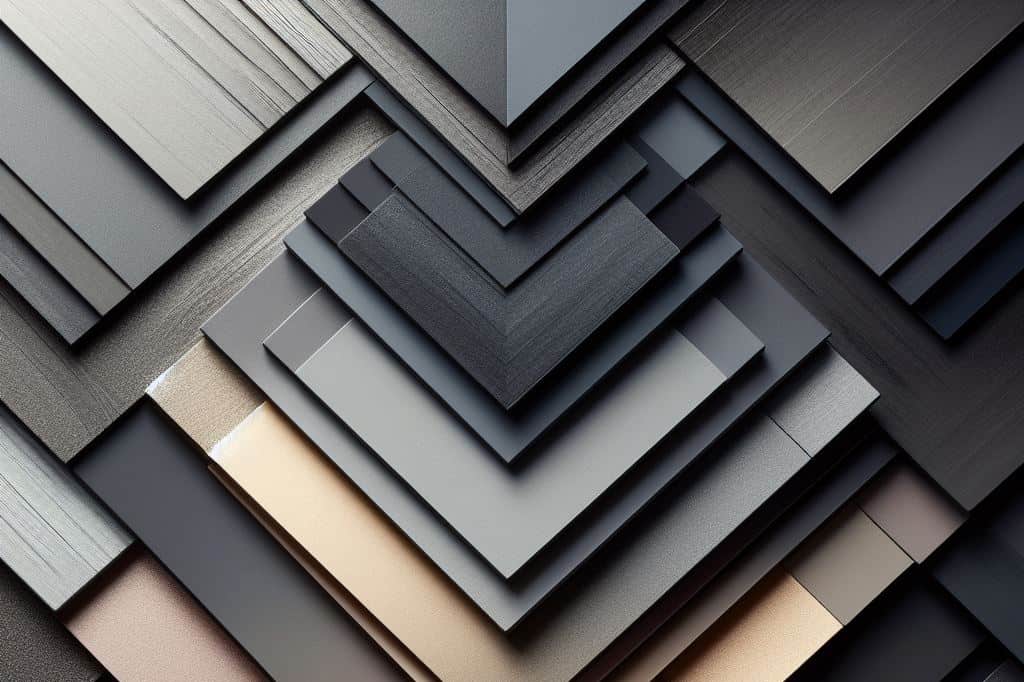Meaning of the Color Gray – Unleashing the Power of Gray
Gray is a color that is somewhere between white and black, making it an achromatic color. Since gray is not a hue, or is without color, it is often overlooked. However, gray can evoke feelings just as much as any real color. In this article, we are going to be dealing with the meaning of the gray color, and the effects it can have on the mind and body. We will also be exploring a few interesting quotes and facts about the color gray. Let’s get started!
Meaning of the Color Gray
| Shade | Hex Code | CMYK Color Code (%) | RGB Color Code | Color |
| Gray | #808080 | 0, 0, 0, 50 | 128, 128, 128 |
A true gray color is technically not a color at all and is considered neutral like black and white. This is why gray is associated with neutrality. However, gray can also represent balance and stability since it is halfway between black and white. Gray can seem conservative and serious, but it can also represent wisdom and sophistication. Gray can be used to evoke feelings of calm; however, it can become somewhat boring and monotonous.

Positive Traits of the Color Gray
- Balance
- Stability
- Sophistication
- Formal
- Calming
- Wisdom
- Seriousness
- Safety
Negative Traits of the Color Gray
- Boring
- Sad
- Indifferent
- Cold
- Depressing
- Isolating
Psychological Meaning of the Color Gray
Gray does not have as much of an illustrious history as many other colors do. However, over the years, gray has picked up quite a few associations and meanings. Gray might have started out dull and depressing, but it has gained more of a positive representation, making it a popular choice, especially in the interior design industry.
Symbolism of Gray
Gray symbolism remains a representation of neutrality, which makes it a very diplomatic color that can be used in many different ways, depending on the colors used with it. Gray is considered a symbol of elegance that can be conservative, and cool.
Gray is neither masculine nor feminine, but it is a popular modern color that is often associated with an industrial feel. According to research, gray is the least favorite color in Western countries like the United States.
The neutrality of gray makes it a versatile “color” as you can change the meaning according to the context, and depending on how it is used, it can represent a variety of different things. The gray color is also a symbol of mystery, consider a gray and misty path that is obscured. There is also the saying, “gray areas”, meaning that something is not completely defined, and has a certain uncertainty and mystery about it.
Stability of Gray
Gray is often the color you see in a city, with gray streets, parking lots, and buildings. All of which should convey a certain durability and foundational stability. Gray is a modern and professional color that provides a solid, yet timeless look. The color gray does not energize or excite, it remains composed, sturdy, and reserved.

Maturity of Gray
Gray is a symbol of maturation and is often associated with gray hairs, which can also be linked to wisdom, dignity, and responsibility.
The various shades of gray are timeless and classic and can be used to create a variety of styles and looks.
Indifference of Gray
The gray color is a reserved color that is often seen as dull and linked to sadness and depression. Gray can be used to create a moody and suspenseful atmosphere. Gray can also appear impartial, indecisive, and indifferent. Consider a gray building that has little color, for example, a courthouse, where the gray imparts a sense of objectivity and impartiality. It is the exact opposite of a passionate color like red, it is the essence of dispassion.

Personality Traits Associated With the Color Gray
Most people have a favorite color, often it is the color blue or green as these are the most popular. It is not often somebody will choose gray as their favorite color. Choosing gray might indicate a personality that is withdrawn or trying to protect themselves from the world. It can also show that a person prefers a balanced and calm life that does not attract attention.
A gray personality is conservative, reliable, and organized. Gray personalities can also be seen as being very serious in nature. They have very little time for silly and immature things, which can make them seem a bit uptight.
Gray can be somewhat of a control freak and perfectionist and does not abide by those who do not respond to rules. Gray personalities are also more private and are difficult to get to know. Not a color for standing out, gray is more of an introvert and does not particularly like social interactions.

Reserved, gray does not easily step out of the comfort zone. Decisions are difficult to make, as overthinking things takes its toll. This indecisiveness can be frustrating to others, as gray personalities often do not take sides or offer their opinions.
All shades of gray can be considered cool and soothing and provide a sense of tranquility.
Gray respects boundaries and will try to keep the peace no matter what. The gray nature can turn too much energy into calm, which can turn into self-reflection. However, too much can seem more subdued and downcast. So, if you work in an active or high-energy environment, make sure the surroundings are not too gray.
Physical Effects of Gray on the Body
Colors can affect both the mind and the body. For example, red can be stimulating and can increase blood pressure, while blue is calming and can lower blood pressure. Since gray is not a color, its effects are less pronounced physically. However, it can have a dampening effect on our mood. It can also be used to moderate other colors so that they do not overwhelm and are more calming.
So, gray tends to affect the energy in a space, which is why it is often paired with other colors to balance everything out.
The Color Gray in Different Cultures
Colors often have a general meaning; however, each color can mean different things to everyone. The meaning of a color can depend on individual experiences, or it can be due to cultural influences. In Western cultures, it is mostly associated with balance, sophistication, stability, and sadness or isolation.

One example of gray becoming a symbol of conformity is that of a painting by Pablo Picasso known as Guernica (1937), which represents war and industrialization. Gray forms the dominant feature of the painting. In other cultures around the world, gray can have related or completely different meanings.
- Latin America: In this area, gray is linked to death, sadness, and mourning.
- Africa: Gray is often seen as stable and mature, a color that offers security and authority.
- China: In some Eastern cultures, gray is a representation of modesty and humility due to its unassuming appearance.
Meaning of the Different Shades of Gray
| Shade | Hex Code | CMYK Color Code (%) | RGB Color Code | Color |
| Gray | #808080 | 0, 0, 0, 50 | 128, 128, 128 | |
| Charcoal | #36454f | 32, 13, 0, 69 | 54, 69, 79 | |
| Slate Gray | #708090 | 22, 11, 0, 44 | 112, 128, 144 | |
| Ash Gray | #b2beb5 | 6, 0, 5, 25 | 178, 190, 181 |
There are many lighter and darker shades of gray, however, there are also many other types of gray that can have different undertones. These undertones are what add a bit more meaning to the gray colors. Below are a few examples of the various shades of gray.
Charcoal
The charcoal gray is a darker shade that resembles something similar to burnt wood. The undertone offers the coolness of blue, which provides a more contemporary look in designs. Charcoal can communicate strength and mystery and is also often seen as formal.
Darker grays are seen as more serious and conservative when compared to lighter grays. The darker charcoal color is very similar to black when it comes to the different meanings.
Slate Gray
This particular shade of gray is lighter than charcoal and is considered a more moderate gray. The name comes from slate rock, which is similar in color. Slate gray has cool blue undertones that offer a calming and reserved look and feel.

Ash Gray
This shade of gray has more of a greenish undertone and is considered a lighter shade of gray. As with all shades of gray, it offers a calm and neutral look that is easy to work with. Lighter shades of gray are more relaxing and comforting and offer a lighter and more airy feel when compared to darker grays.
Ash gray can also be seen as stable, balanced, and sophisticated, and can be used to create a soothing environment.
Is Gray a Chakra Color?
In this belief system, there are seven primary chakras, each one an energy center that is located along the spine. These chakras are related to the various organs in the body and if unbalanced or blocked, they can cause various physical and mental problems. The chakras begin at the base of the spine, which is the root chakra and is represented by the color red. The following are the other six chakras and their colors.

- Sacral chakra (orange)
- Solar plexus chakra (yellow)
- Heart chakra (green)
- Throat chakra (blue)
- Third eye chakra (indigo)
- Crown chakra (violet)
These colors should be vibrant, which shows that the energy is flowing freely. When gray is observed in the chakras, it can mean that there is a blockage of the natural flow of energy. This can indicate problems, such as depression, sadness, or disappointment. Gray can also indicate some kind of physical disease in the body.
There are many things you can do to unblock the chakras, including yoga, meditation, affirmations, walking in nature, and using colored gemstones.
Interesting Phrases, Idioms, and Famous Quotes About the Color Gray
Idioms are a fun way to express yourself, and each color has a few well-known idioms that are often used. However, what about gray? Are there any idioms or well-known sayings linked to this unassuming color? Take a look below, and you might find a few you recognize. We have also included a few gray quotes and fun facts about the color gray.
Phrases and Idioms About the Color Gray
Let us see if you recognize any of the following phrases that contain the color gray. One of the more recognizable phrases is “gray matter”. Teachers may have referred to this in class, asking you to use those little gray cells. In other words, it refers to the brain and intelligence. Here are a few more phrases and idioms you might recognize.
- Gray area: When referring to a “gray area”, it is something that is not clear, or lacks specifics.
- All cats are gray in the dark: This means that when it is dark, appearances do not matter as things appear similar.
- Gray hairs: When you are stressed or worried over something, it can give you gray hairs. This means that you are aging faster due to stress.
- Gray market: This phrase is used if a product is being sold illegally or through unofficial channels.
- A gray day: When the clouds cast a shadow over the day, it can sometimes feel sad and depressive.
- Seeing shades of gray: Having an open mind and not labeling something and putting it in a box.

A Few Famous Gray Color Quotes
Many artists and other famous people have made comments, and these quotes have become famous, even after many years. Some of these famous people died many years ago, and many others have more recently gained a reputation. Below are some of these famous quotes about the color gray.
- “Better gray than garishness” by French Neoclassical painter Jean-Auguste-Dominique (1780 – 1867).
- “A gray day provides the best light” by the painter Leonardo da Vinci (1452 – 1519).
- “There’s so much gray to every story – nothing is so black and white” by journalist and television personality Lisa Ling (Born 1973).
- “These little gray cells. It is up to them” by the famous author Agatha Christie (1890 – 1976).
- “I like gray characters; fantasy for too long has been focused on very stereotypical heroes and villains” by author George R. R. Martin (Born 1948).
- “The color of truth is gray” by French author Andre Gide (1869 – 1951)
Some Fun Facts About the Color Gray
Gray is quite a common color in nature and can be found in fish, birds, and land animals. For example, mice, elephants, gray wolves, and whales. Gray provides a great neutral color that easily camouflages and blends with the environment. Gray eyes are a very rare occurrence in humans, only about three percent of the population have gray eyes. Most commonly, this occurs in cultures from Northern and Eastern Europe.
In the Middle Ages, gray was a common color as it was the color of undyed wool, which was often worn by the poor and peasants. Moving to the 1930s, gray became something that represented war as well as industrialization.
When using gray in paintings, many artists have created it by simply mixing white and black in different ratios. Red was added to create a warmer-looking gray while adding a little blue created a cooler gray. Often, artists also use two colors, known as complementary colors, to create a shade of gray. For example, you can try mixing blue and orange. Photographers are also known to use gray backgrounds. This is because gray is the perfect neutral color and is easy on the eyes.

When referring to “gray matter”, it means our brains. However, our living brain is more of a pink color and only turns gray once the cells die. The word “gray” is often seen in the United States, while it is spelled “grey” in British English.
Gray is not one of the popular colors like blue or green as it is actually not a color at all! Gray is achromatic or without color, and is a neutral along with black and white. It is often perceived as a color that can be cold, indifferent, and boring, however, gray can also be seen as sophisticated and calming. Gray, being a neutral, makes it quite versatile to use with other colors. This makes it quite a popular choice when it comes to various design projects, such as interior décor.
Frequently Asked Questions
What Is the Meaning of the Color Gray?
Gray symbolism can be quite diverse, as it has many positive and negative associations. Gray can be seen as strong, formal, sophisticated, and balancing color. However, it can also be associated with boredom, isolation, depression, and sadness.
What Are the Personality Traits of Gray?
Gray can be seen as indecisive and detached. It is also an unemotional color that can seem distant and unfriendly. However, the color gray is a great example of compromise and is a color that provides calm and introspection.
What Does Gray Mean Spiritually?
In certain instances, gray can be a sign of imbalance. However, its calming effects can help with emotional healing. Gray, being in between white and black, is a color that can promote change and helps with personal growth, while providing balance and peace.
In 2005, Charlene completed her Wellness Diplomas in Therapeutic Aromatherapy and Reflexology from the International School of Reflexology and Meridian Therapy. She worked for a company offering corporate wellness programs for a couple of years, before opening up her own therapy practice. It was in 2015 that a friend, who was a digital marketer, asked her to join her company as a content creator, and this is where she found her excitement for writing.
Since joining the content writing world, she has gained a lot of experience over the years writing on a diverse selection of topics, from beauty, health, wellness, travel, and more. Due to various circumstances, she had to close her therapy practice and is now a full-time freelance writer. Being a creative person, she could not pass up the opportunity to contribute to the Art in Context team, where is was in her element, writing about a variety of art and craft topics. Contributing articles for over three years now, her knowledge in this area has grown, and she has gotten to explore her creativity and improve her research and writing skills.
Charlene Lewis has been working for artincontext.org since the relaunch in 2020. She is an experienced writer and mainly focuses on the topics of color theory, painting and drawing.
Learn more about Charlene Lewis and the Art in Context Team.
Cite this Article
Charlene, Lewis, “Meaning of the Color Gray – Unleashing the Power of Gray.” Art in Context. February 7, 2024. URL: https://artincontext.org/meaning-of-the-color-gray/
Lewis, C. (2024, 7 February). Meaning of the Color Gray – Unleashing the Power of Gray. Art in Context. https://artincontext.org/meaning-of-the-color-gray/
Lewis, Charlene. “Meaning of the Color Gray – Unleashing the Power of Gray.” Art in Context, February 7, 2024. https://artincontext.org/meaning-of-the-color-gray/.









